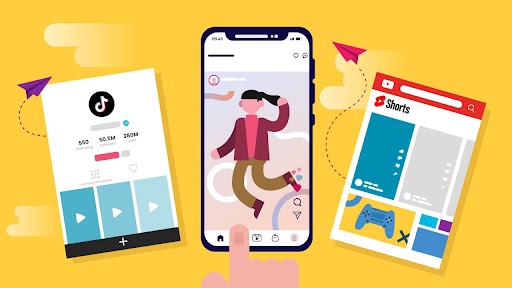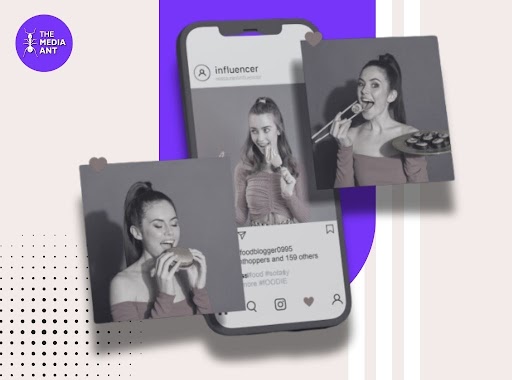What is Influencer Marketing for Restaurants?

Influencer marketing for restaurants involves partnering with social media personalities, food bloggers, and influencers to promote your restaurant to a wider audience. These influencers share their dining experiences, recommend your menu, and showcase your ambiance through engaging content. With their large and loyal follower base, they can drive real-world traffic to your restaurant, building brand awareness and trust.
Key Benefits of Restaurant Influencer Marketing
- Increased Visibility: Influencers can put your restaurant in front of thousands of potential diners who may not have heard about you otherwise.
- Targeted Audience: Restaurant influencers usually have a niche following that aligns with your audience. Whether you’re targeting local foodies or tourists, influencers can help you reach the right crowd.
- Trust and Credibility: People trust influencers’ opinions. A positive review or recommendation from a trusted figure can make your restaurant stand out.
- Boost in Sales: A well-timed influencer campaign, like one during a new menu launch or event, can drive more foot traffic and online orders.
- Engaging Content Creation: Influencers create high-quality content (photos, videos, blogs) that you can also share across your platforms for better online presence.
Who are Restaurant Influencers?

Restaurant influencers are individuals who specialize in food and dining experiences. They include food bloggers, chefs, travel influencers, and lifestyle content creators who have a passion for discovering and showcasing unique restaurants. These influencers have a strong social media presence on platforms like Instagram, YouTube, and TikTok. Their content often includes reviews, photos, and videos of restaurant dishes, ambiance, and services.
Winning Influencer Marketing Strategy for 2024-25
Influencer marketing for restaurants continues to evolve, and to stay ahead of the curve in 2024-25, it’s essential to adapt to the latest trends and strategies. A successful influencer marketing campaign is more than just getting someone to post about your restaurant—it’s about building genuine connections, creating engaging content, and delivering an experience that resonates with your audience.
1) Identify the Right Influencers
The first step to success is finding the right influencers. It’s not just about the number of followers; it’s about finding someone who aligns with your restaurant’s brand and values. Here’s how to do that:
- Look for Local Influencers: Restaurants often rely on foot traffic from the local community. Collaborate with influencers who are well-known in your area. They have more sway with locals and can drive immediate visits.
- Niche Matters: In 2024-25, hyper-specific niches are trending. For example, if your restaurant specializes in vegan food, collaborate with vegan influencers or plant-based bloggers. The more aligned the influencer is with your niche, the more authentic the promotion feels.
- Engagement Over Follower Count: An influencer with 10k highly engaged followers can be more impactful than one with 100k disengaged followers. Look for influencers whose followers comment, share, and interact with their content consistently.
2) Build Genuine, Long-Term Relationships
Influencer marketing is shifting from one-off collaborations to long-term partnerships. Building lasting relationships with influencers can yield better results for several reasons:
- Authenticity: When an influencer promotes your restaurant regularly, their audience sees them as a true advocate rather than someone who’s just in it for a paycheck. This builds trust and credibility.
- Consistent Exposure: Long-term partnerships keep your restaurant top of mind. Repeated mentions can lead to higher brand recall and, eventually, more foot traffic or online orders.
- Exclusive Offers and Experiences: Invite influencers to your restaurant for special events, exclusive tastings, or behind-the-scenes tours. These personal experiences make influencers feel valued and create content that’s more engaging and unique.
3) Leverage Short-Form Video Content
Short-form video content is one of the most effective ways to showcase your restaurant in 2024-25. Platforms like Instagram Reels, TikTok, and YouTube Shorts are leading the way in social media engagement. Here’s why it works:
- Visual Appeal: Food is a highly visual subject, and short videos capture the essence of your restaurant—whether it’s the sizzling of a dish, the ambiance, or the plating of an artistic dessert.
- Quick Consumption: Audiences today have shorter attention spans. A well-crafted 15-30 second video can grab attention quickly and leave a lasting impression.
- Viral Potential: Platforms like TikTok are known for making content go viral. One viral video showcasing your restaurant can lead to a significant spike in visibility and foot traffic.
Encourage influencers to create snackable, creative content that showcases your restaurant’s unique offerings, whether it’s a signature dish, a quirky decor feature, or a unique dining experience.
4) Utilize Authentic Storytelling
The most successful influencer marketing campaigns tell a story. For restaurants, storytelling can mean showing how your restaurant was founded, highlighting the passion behind the food, or showcasing customer experiences.
- Emphasize the Dining Experience: Influencers should focus on more than just the food. What makes dining at your restaurant special? Is it the atmosphere, the staff, the backstory of your dishes? These human touches help audiences connect emotionally with your brand.
- User-Generated Content (UGC): Encourage influencers to engage their followers by asking them to share their own experiences. This could be through hashtags, contests, or features on your restaurant’s social media. It’s a great way to get more content and create buzz around your brand.
5) Focus on Data-Driven Campaigns
One of the most critical shifts in influencer marketing for 2024-25 is the move towards data-driven decision-making. Here’s how to make sure you’re tracking the right metrics:
- Set Clear Goals: Before starting any campaign, define what success looks like for you. Is it more followers, increased foot traffic, higher online orders, or better engagement? Setting clear goals helps you measure ROI more effectively.
- Track Performance Metrics: Use tools like Google Analytics, Instagram Insights, or other social media analytics platforms to track the performance of influencer posts. Key metrics to focus on include engagement rate, reach, conversions (like bookings or orders), and traffic generated.
- Adapt and Optimize: The digital landscape changes fast. Keep an eye on what works and what doesn’t. If a certain type of content is getting more engagement, adjust your strategy to focus on that. Always be prepared to test and optimize for better results.
6) Create Exclusive Campaigns
Influencers can help drive excitement and urgency around your restaurant through limited-time offers or exclusive promotions. For example:
- Influencer-Hosted Events: Host an influencer night where select influencers bring their followers to your restaurant for a one-of-a-kind dining experience. This not only creates content but also drives direct foot traffic.
- Exclusive Menus or Offers: Collaborate with an influencer to create a special dish or menu item available for a limited time. This creates a sense of exclusivity and encourages followers to visit before it’s too late.
By following these steps, you’ll be able to craft a highly effective and personalized influencer marketing strategy for your restaurant in 2024-25. It’s all about staying authentic, adapting to trends, and measuring success to refine your approach.
Cost of Restaurant Influencer Marketing
The cost of restaurant influencer marketing can vary widely depending on several factors, such as the influencer’s reach, engagement, niche, and the type of content you’re looking for. Here’s a breakdown to help you understand the different pricing structures and factors involved:
- Micro-Influencers (1K – 50K Followers):Cost: ₹5,000 – ₹25,000 per post.
- Mid-Tier Influencers (50K – 200K Followers): Cost: ₹25,000 – ₹1,00,000 per post.
- Macro-Influencers (200K – 1M Followers): Cost: ₹1,00,000 – ₹5,00,000 per post.
- Celebrity Influencers (1M+ Followers):Cost: ₹5,00,000 – ₹20,00,000+ per post.
Conclusion
Influencer marketing for restaurants is an invaluable strategy for building brand awareness, connecting with local communities, and driving customer engagement in today’s digital world. As we move into 2024-25, the focus is shifting toward authenticity, with long-term partnerships offering better results than one-off collaborations. Leveraging visually engaging platforms like Instagram through short-form content is key, as food-related posts are highly shareable and appealing. It’s essential to choose influencers who align with your restaurant’s niche and target audience, whether through local micro-influencers or broader-reaching macro-influencers. Ultimately, balancing the cost with potential ROI and focusing on genuine relationships will help your restaurant stand out in an increasingly competitive space.
Top Influencers for Food Marketing in India
Influencer Marketing in Top Cities – The Media Ant
Influencer Marketing Agency in Bangalore
Influencer Marketing Agency in Mumbai
Influencer Marketing Agency in Delhi
Influencer Marketing Agency in Chennai
Influencer Marketing Agency in Pune
Influencer Marketing Agency in Kolkata
Frequently Asked Questions
What is a restaurant influencer?
A restaurant influencer is a social media personality or content creator who promotes restaurants by sharing reviews, experiences, and dining recommendations with their followers, often influencing their audience’s dining choices.
What is the role of a food influencer?
A food influencer promotes food-related content such as recipes, restaurant reviews, or cooking tips to engage their audience. They help food brands and restaurants reach new customers, build trust, and generate buzz through authentic recommendations and creative content.
What is the impact of food influencers?
Food influencers have a significant impact by increasing brand visibility, driving foot traffic to restaurants, and shaping consumer choices. Their authentic recommendations and reviews can boost a restaurant’s reputation, create viral trends, and help build trust with potential customers, especially on social media platforms.
What are the benefits of food influencers?
Food influencers offer benefits like improved brand awareness, increased customer engagement, and more authentic promotion. They can reach targeted audiences, provide social proof, and help drive sales through relatable content. Collaborating with them also offers cost-effective marketing and a chance to tap into niche communities.





